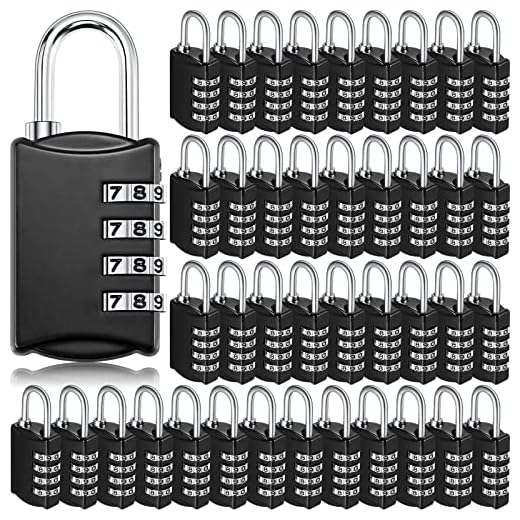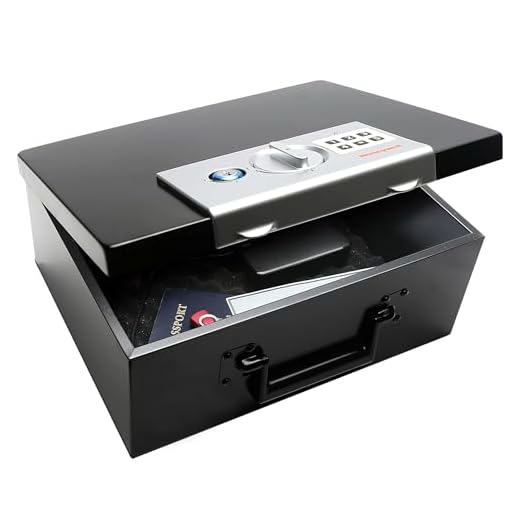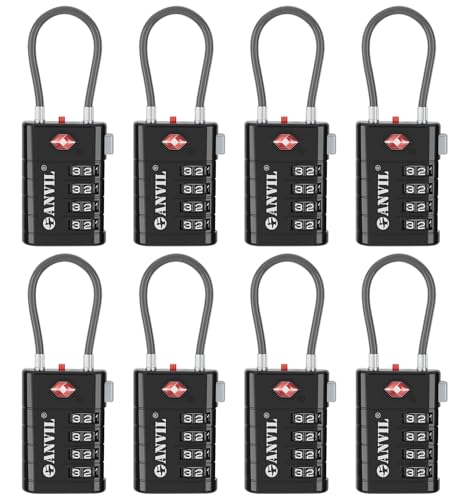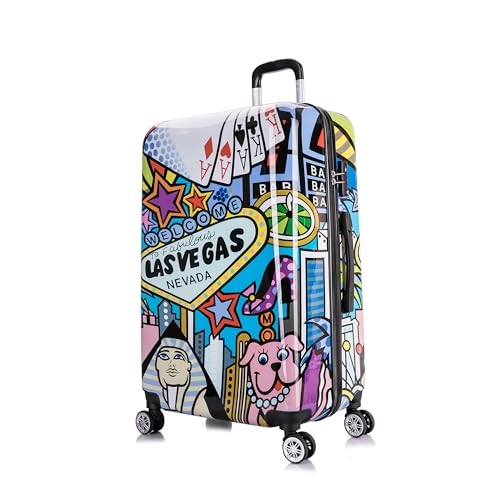





U.S. screening authority (Transportation Security Administration) reserves the right to open and, if necessary, destroy aftermarket closures on checked bags during inspection. Choose closures explicitly advertised as compatible with Transportation Security Administration master keys – look for Travel Sentry or Safe Skies markings or wording such as “inspection‑compatible” on product packaging. Devices without that compatibility are routinely breached with bolt cutters or specialized tools, not negotiated with passengers.
Practical steps: 1) Use an integrated factory combination or an inspection‑compatible fastening device when checking a suitcase. 2) Keep high‑value items, medications and electronics in your carry‑on. 3) For added tamper evidence, apply numbered zip seals or tamper‑evident ties to external zipper pulls; those will be cut if inspected but leave visible indication. 4) Photograph contents and serial numbers, and retain purchase receipts for valuable items.
Rules vary by country and airline; verify the departure country’s screening agency guidance and your carrier’s baggage policy before travel. If a closure is cut during inspection, report the incident at the airline counter immediately, keep your boarding pass and bag tag, and request a written report – that documentation increases the chance of reimbursement for damaged contents or case.
Using unapproved security on your suitcase
Use a Travel Sentry or other master-key-compatible security device for checked suitcases; screening officers routinely cut or break aftermarket fasteners when they cannot access a bag, and airlines rarely replace damaged zipper pulls or broken frames free of charge.
Airport screening personnel have authority to inspect checked bags; if a device is not recognizable to them they typically remove it with bolt cutters, pliers or scissors and will not refasten the same hardware. Two widely accepted standards are Travel Sentry and the Safe Skies program – devices carrying those marks are designed to be opened by authorized screeners without destructive force.
Practical actions: store jewelry, passports, cash and small electronics in a carry-on; photograph contents and exterior condition before handing off a checked case; use serialized tamper-evident seals or cable ties as secondary indicators of interference; register any approved-device codes with the manufacturer and retain purchase receipts; read your airline’s checked-bag policy and buy excess-value coverage or private travel insurance for high-value items.
Quick checklist: choose a master-key-compatible fastening device for checked items; place valuables in a carry-on; apply tamper-evident seals and keep their serial numbers; photograph and list contents; inspect bag at claim if damage occurred and file an irregularity report with the carrier before leaving the airport.
Is it legal to use a securing device not approved by the Transportation Security Administration on checked baggage in the U.S.?
Yes – U.S. law does not criminalize securing checked baggage with a closure that the Transportation Security Administration cannot open; however Transportation Security Administration screeners retain authority to inspect checked items and may cut, break or otherwise disable such closures during screening, and the agency generally disclaims liability for resulting damage.
Concrete steps to reduce risk: keep cash, electronics and irreplaceables in carry-on; use tamper-evident zip ties or numbered seals that reveal forced entry; photograph exterior and contents and retain purchase receipts; check your airline’s carriage and claims policy before travel; if avoiding forced entry is highest priority, choose closures accepted by the Transportation Security Administration.
If a closure prevents inspection, the carrier or Transportation Security Administration may refuse carriage or access the item; damage or loss claims should be submitted to the airline first and, if unresolved, escalated to the Department of Transportation consumer protection office.
Additional unrelated technical guidance: how to test the air suspension compressor relay.
What happens if security needs to inspect my checked bag with a third-party closure?
Expect the aftermarket closure to be cut or disabled for inspection; officers normally reseal the item with a tamper-evident tie and leave a written screening notice inside or on the exterior.
- Legal authority: federal screening personnel may open any checked item for safety screening and have tools to gain access when a closure cannot be opened with ordinary means.
- Typical access methods: cutters, shears or pry tools; zippers and aftermarket fastening devices are frequently removed rather than repaired.
- Notification practice: a printed or adhesive “screened” tag is commonly left; the tag will usually indicate that the item was opened and inspected.
- Prohibited items: any contraband found will be removed and may be destroyed or turned over to law enforcement; permitted items are returned to the bag.
- Carrier/screener liability: replacement of a broken aftermarket closure is unlikely to be covered automatically; compensation for damaged contents depends on the carrier’s baggage policy and filing procedures.
After inspection – immediate steps
- Locate and photograph the inspection notice, the resealed area, and the contents before repacking.
- Compare contents to your packing list; note missing items and gather proof of purchase or value (receipts, photos, serial numbers).
- Report damage or missing property to the airline’s baggage service office at the airport and obtain a written irregularity report (or reference number).
- Keep boarding passes, bag tags and inspection documentation; submit a formal claim with the carrier following their stated deadlines and procedures.
Practical steps to reduce impact
- Keep valuables, medications and travel documents in carry-on only.
- Use inexpensive tamper-evident seals (zip ties) as sacrificial closures–these are easy to replace and make inspection visible.
- Photograph how items are packed and retain purchase receipts for high-value goods and electronics.
- Include a copy of your contact details and itinerary inside the checked item so the carrier can reach you if needed.
- If you notice damage or missing items after leaving the airport, contact the carrier immediately and follow their documented claim process; timely documentation improves chances of recovery or reimbursement.
Who will cut an unapproved security fastener and who pays for repairs?
Use an agency-approved baggage fastener to avoid forced opening; if airport screening staff or law-enforcement screeners need access they will cut a non-approved closure and the passenger normally bears the cost unless the carrier admits mishandling.
Who is likely to cut a closure
Federal screening personnel (Transportation Security Administration or equivalent abroad) and airport security officers may open any container that triggers an inspection. Airline ground crews generally will not cut a closure unless directed by security or unless a bag requires manual access during handling. Ramp agents and baggage handlers are more likely to cause accidental damage during transfer than to intentionally sever a fastener.
| Actor | Typical action | Typical liability |
|---|---|---|
| Federal screening personnel | May cut sealed straps, zip-ties, or other unapproved closures to inspect contents; will leave inspection notice | Inspection-related cuts usually not compensated by the screening agency; passenger responsible for replacement of closures and minor repairs |
| Airline ground staff / baggage handlers | Rarely cut closures unless ordered; may damage bag or closure during loading/unloading | If damage is from mishandling, carrier may be liable – requires on-site report and formal claim |
| Airport operations / law enforcement | May open for safety or security reasons, sometimes using cutters | Liability varies; documentation and follow-up required to determine payment responsibility |
Exact steps to protect your position and seek compensation
1) Photograph the bag and closure before handing it over to check-in or security. 2) If you find a cut or damage at the airport, report it immediately at the airline desk and request a Property Irregularity Report (PIR) or written incident note. 3) Keep the removed fastener and any inspection notice left by security. 4) Obtain repair or replacement estimates and retain receipts. 5) File the carrier claim per its contract of carriage; for international itineraries, submit damage claims promptly – a written complaint within seven days is required under the Montreal Convention for damaged baggage. 6) If a federal screening agency opened the bag, include the inspection notice with your claim; those agencies typically do not reimburse for removed closures, but airline liability may exist if handling caused the damage.
If you prefer avoidance rather than claim disputes: use a recognized, screeners-accepted closure or keep valuables and fragile items in a carry-on. For unrelated reading, see best rgb umbrella color and best way to bend umbrella back.
How to safeguard valuables when using a personal security device for travel
Keep high-value items in your carry-on or on your person. Avoid placing irreplaceable items in checked baggage secured with a personal security device that airport inspectors cannot open; scanned bags are subject to forced entry and damage.
Practical packing and concealment steps
Store electronics (laptop, camera, tablet) and important documents (passport, hard-copy boarding pass, travel cards) in cabin baggage or a locked, wearable pouch. Wear small jewelry pieces while traveling rather than packing them together; distribute cash and cards across a wallet, hidden belt, and a separate emergency stash to reduce single-loss exposure.
Use tamper-evident closures: single-use nylon cable ties or numbered tamper seals on zippers and compartments. These cost about $0.05–$0.50 each online; photograph the seal number and the sealed area before handing the bag to an agent so you can prove forced entry later.
Pack valuables inside a small portable steel-cable safe or security pouch that anchors to fixed objects in a hotel room (bed frame, heavy furniture). Typical travel safes weigh 0.6–1.2 lb and accommodate phone, passport, and wallet; keep that unit inside your checked bag rather than relying on the checked compartment alone.
Documentation, insurance and recovery
Photograph every valuable from multiple angles, note serial numbers and model names, and store receipts in cloud storage accessible from your phone. Enable device tracking (e.g., manufacturer location services) and register serial numbers with the manufacturer where possible.
Buy travel insurance or a supplementary gadget/jewelry policy that covers theft and damage abroad; check policy limits, per-item caps, and required documentation for claims. For high-value items, carry duplicate documentation (cloud + printed) and be prepared to file a report with the airport police where the incident occurred.
Anticipate forced entry: keep spare cable ties and a small repair kit in your carry-on so you can restore a damaged zipper or reseal an opening on arrival. Use protective padding (hard-shell cases, bubble wrap around fragile valuables) inside compartments to limit impact from cutting or prying.
How rules differ at major international airports
Use a master-key compatible securing device for travel through the U.S., Canada, Mexico and many Caribbean/Latin American airports; otherwise expect forced entry, a tamper-evident reseal and an inspection notice left inside your checked bag.
North America (key hubs)
Major U.S. and Canadian screening authorities operating at JFK, LAX, ORD, ATL, YYZ and other big hubs have statutory authority to open checked baggage. If screeners cannot access contents they typically cut the securing device with bolt cutters or shears, inspect, then reseal with cable ties and place an inspection tag. The Travel Sentry/master-key program is widely recognized across these countries and allows screeners to open compatible devices without destruction; acceptance is common but not universal at every checkpoint.
Europe, UK, Asia–Pacific and Middle East
Procedures vary by country and by whether the opening is a security search or a customs search. Many European airports (LHR, AMS, FRA) and Australian hubs (SYD, MEL) will open, inspect and reseal with tamper-evident ties; replacement methods and liability are set by the airport/operator. Several Asian and Middle Eastern ports (SIN, HKG, DXB, DOH) combine strict customs rules with screening powers–finding prohibited items can trigger seizure or law-enforcement action beyond simple resealing. Master-key compatibility works in parts of Europe and Asia but is less consistently available than in North America; when master keys are unavailable, expect destructive access.
Practical differences to note: who performs the opening (security screener vs customs officer), the type of reseal used (cable tie, tamper-evident tape, official seal), and potential legal consequences for prohibited contents. Verify the specific airport or carrier page for the hub you’ll transit, and favor a recognized master-key device where that program is accepted.










